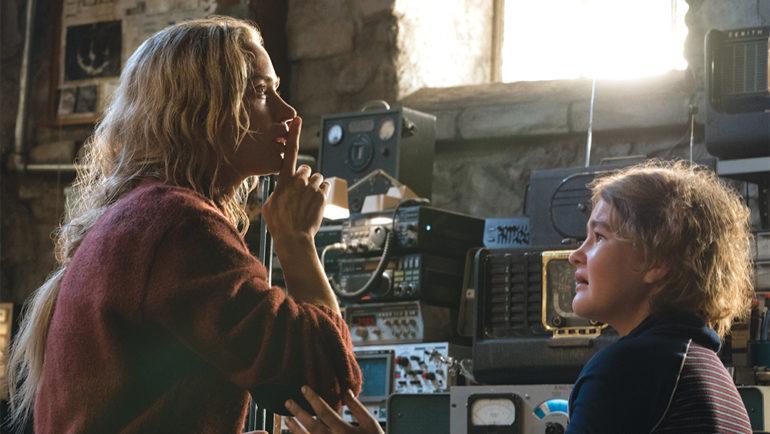How ‘A Quiet Place’ Sound Editors Scared Audience Sans Noise
By Daron James
LOS ANGELES (Variety.com) – What if living in silence was your only means of survival? That’s the question supervising sound editors Ethan Van der Ryn and Erik Aadahl had to answer in the hair-raising thriller “A Quiet Place” from co-writer-director John Krasinski, who also starred alongside wife Emily Blunt as the on-screen couple Lee and Evelyn Abbott.
The allegory depicts a post-apocalyptic universe in which bloodthirsty creatures hunt through sound, attacking anything with an acoustic resonance.
To immerse viewers in the macabre the aural connection between sound and death needed to be defined and articulated.
Having met in pre-production with Krasinski, who himself admits he knew “sound was going to be a character, if not the main character above all else,” the supervising sound editors created the logic behind what sound levels were dangerous and what levels were below the threshold.
“It’s just as hard if not harder to make a world of quiet than it is to make a movie full of sound,” Aadahl says. “You’re naked in a way and everything has to be delicately balanced and perfect.” Perspective, or what the team called “sonic envelopes,” was paramount in building its rousing atmosphere, too.
Regan, the Abbotts’ deaf daughter, played by Millicent Simmonds, who is deaf in real life, became a focal point in expanding the creepiness to the story. With the camera framing her point of view, sound could jump from the apocalyptic world into her perspective; stripping sound effects and music to allow the visuals to intensify scenes on their own.
“Doing this creates an interesting dynamic,” says Aadahl. “It allows the audience to hear what she is experiencing, and at the same time, we see what’s lurking behind her.”
To create Regan’s sonic envelope, a binaural microphone — the Neumann KU 100 — was used; specifically to define the sound effects for her cochlear implants that viewers would hear.
The microphone is in the shape of a human head and its unique recordings provide sounds as if they are inside your head. “It lends a sense of touch to the sound and it became a perfect tool for this movie,” Aadahl adds.
The terrifying creatures with their fanged teeth, translucent skin and enormous conch shell-like ears were another acoustic challenge. Krasinski described different modes of what they should sound like during pursuit: an attack mode, a search mode and a calm and idling sound. Since the monsters are blind, the team came up with the concept that they would use sound to see.
“We based it on real world animals that use echolocation to identify the shape, size and location of something,” says Van der Ryn.
“As the sound reflects on the surfaces around them it paints a three-dimensional picture in the same way dolphins use high-frequency sound to navigate in the ocean.”
In creating the creatures’ distinct clicking noise to find prey, the source material came from shooting a stun gun into a vine of grapes and further processed with effects.
The two supervising editors realized the entire project was an exercise in contrast and dynamics in which every sound had to be considered.
“In many ways the sound design was the ultimate test. Most people think it’s about how much sound you can put into a movie, but in ‘’ it was the opposite. It was about how much we could take out,” says Van der Ryn. “It’s the contrast that gives you the drama. When you can go from very quiet to very big which allows us to explore and create an incredible story for the audience to experience.”

